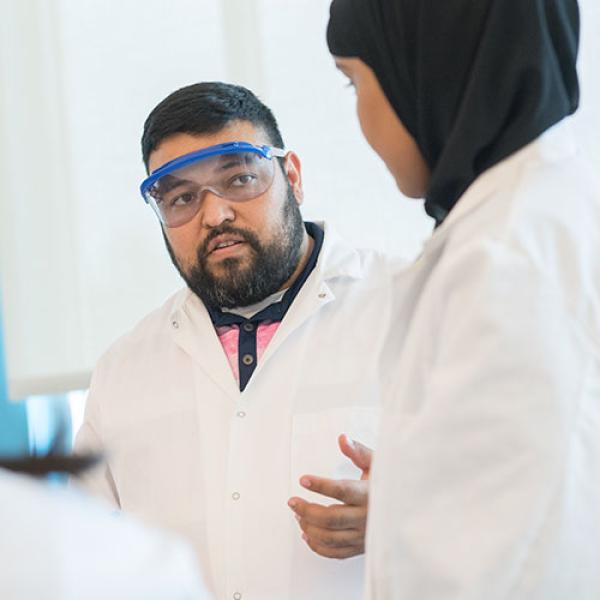Roderico Acevedo
Biography
Professor Acevedo joined the WSU faculty in Fall 2018. While his background is steeped in traditional biophysical characterization of protein structure-function-dynamics relationships, his research interests are vast. Student research has spanned from protein engineering, environmental science, baking (sourdough bread), to learning chemistry via virtual reality technology. If it's interesting and loosely tied to biological chemistry, Professor Acevedo is willing to mentor the project.
Professor Acevedo is a steering committee member of BioMolViz, a Sloan Scholars Mentor, a lifetime member of SACNAS, and a member of the ASBMB. He and his students have gone to local, regional, and national conferences to present their work.
When not at WSU, Professor Acevedo enjoys watching sports (soccer and basketball), playing video games with friends and chasing his children around the house.
Honors and Awards
- Alfred P. Sloan Fellow, 2012-2016
- Bunton-Waller Scholar, 2010-2014
Education
B.S., Shepherd University, in Biochemistry, 2010 (Shepherdstown, WV)
Ph.D., Penn State University, in Chemistry, 2016 (University Park, PA)
Postdoc: Institute of Bioscience and Biotechnology Research (IBBR), 2016-2018
Courses Taught
CHEM 0109 General Chemistry I
CHEM 0103 Nursing Chemistry
Areas of Research
Biochemistry
X-ray and neutron scattering
NMR
Protein-nucleic acid interactions
Publications
2021. Effects of 12 weeks of water aerobics on body composition in those affected by breast cancer. AJ Salacinski, EJ Doyle, R Damon, RA Acevedo, CE Broeder. Supportive Care in Cancer, 29, 1205-1212.
2018. Debnath S, Kosek D, Tagad HD, Durell SR, Appella DH, Acevedo R, Grishaev A, Dyda F, Appella E, Mazur SJ. A trapped human PPM1A-phosphopeptide complex reveals structural features critical for regulation of PPM protein phosphatase activity. J Biol Chem.
Mar 30. 2016. Roderico Acevedo, Declan Evans, Kathyrn A. Penrod, Scott A Showalter. “Binding by TRBP-dsRBD2 Does Not Induce Bending of Double-stranded RNA.” Biophysical Journal 110 (12), 2610-2617.
2014. Roderico Acevedo, Nichole Orench-Rivera, Kaycee A. Quarles, Scott A Showalter. “Helical Defects in MicroRNA Influence Protein Binding by TAR RNA Binding Protein.” PloS One 10 (1), e0116749-e0116749.
2012. Christopher Wostenberg, Jeffrey W. Lary, Debashish Sahu, Roderico Acevedo, Kaycee A. Quarles, James L. Cole and Scott A. Showalter. “The Role of Human Dicer-dsRBD in Processing Small Regulatory RNAs.” PLoS One, 7, e51829.
Professional Service
- Committee member of BioMolViz
- Sloan Scholars Mentor
- Member of SACNAS
- Member of the ASBMB
